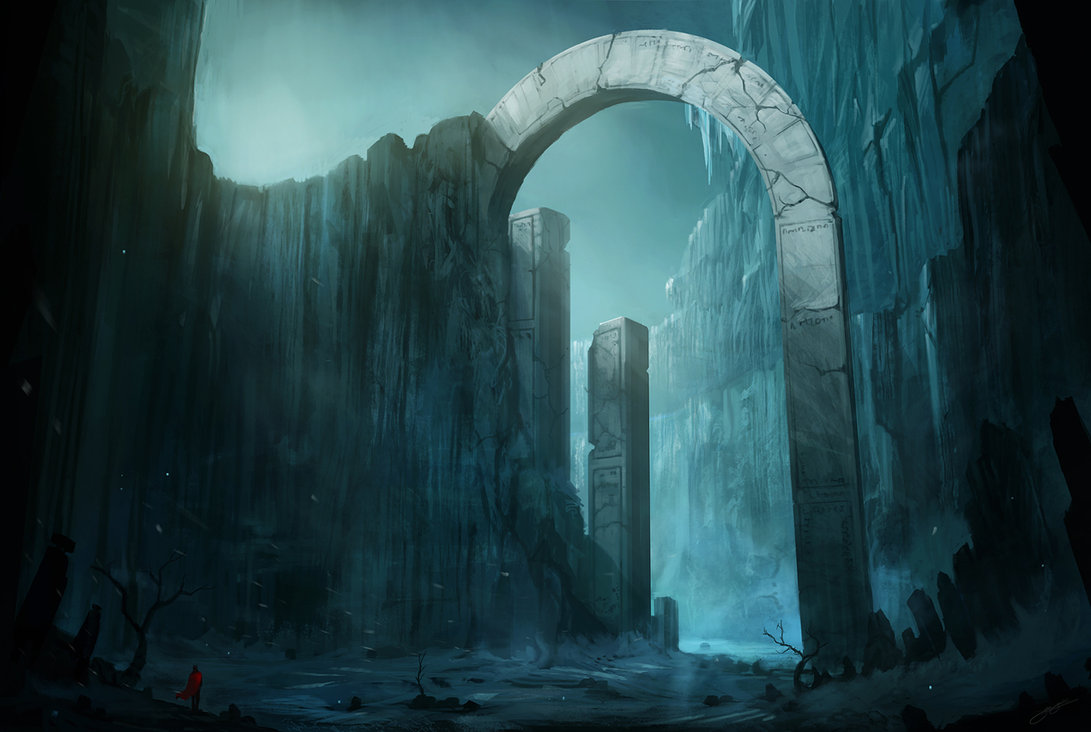Void Navies
Most vessels capable of entering an atmosphere of a planet must be built in such a way that all the decks are parallel to the engines. Ships are designed vertically, not horizontally. This lets the engines simulate gravity for those on board when propelling the ship.
Another similarity between all voidcraft is modular fittings. Vessels created by sophisticated shipwrights are designed in such a way that any piece can be easily removed and replaced with another. These modules can include weaponry attached to hard points on the vessel, armor plating, even the hardware of a ship's computer system can be easily replaced.
Impossible technology
There are many things in the galaxy that just don't follow the rules. There are inescapable laws that some have, nonetheless, escaped. A prime example is that of Newton's laws. You can only go so fast, no ftl here. Despite this, there is the presence of Warp Drives and Hyperlanes. This comes from what many call "Higgstech." Standard fusion engines must consider forces involved with high velocity. Stopping too fast will turn your crew into a new coat of paint on the wall. There are very few exceptions to these rules, and these exceptions usually exploit some loophole in universal law.By giving the vessel negative mass using higgstech, warp drives can bend space-time around them in such a way that space moves around the vessel, as opposed to it having a set velocity. Impossible technology is often only created by those who alter their perception of the problems they encounter. There are no inertial dampeners, but there are devices that can change the relationship between the higgs mechanism and gluon fields, affecting the amount of mass a vessel has, decreasing g-forces when slowing down. Higgstech is cutting edge, and there are few capable of it.
Engineering and travel
The most common form of propulsion used in the galaxy is Fusion. They are exceptionally efficient when it comes to fuel and can produce velocity that is powerful enough to tear the ship it's on to pieces, at least with frigates. The only restriction to its speed is what g-forces the crew can handle. Traveling through a solar system can take days, or weeks, unless one is in possession of a warp drive. Travel to another system necessitates the use of warp technology.Communications
Currently, communications are restricted to standard methods, looking much like email, recordings, and text messaging on a system wide scale. These messages can take ages to be received, and twice as long to get a reply. One of the few achievements made by humans, the quantum telegraph changed this. There are approximately 56 quantum telegraphs in use by humanity, giving them the ability to send text-based messages instantly, no matter the distance. It's one of the few things humanity has going for it.Warfare
No one form is better than the other, due to how technology has developed, and each has their own tactical use depending on the situation. Defensive technology includes shields, counter boarding measures, hull repair nodes, point defense systems, armor plating, and other modules designed to protect the vessel. Support technology includes drone bays, cyber warfare suites, interdiction arrays, stealth drives and any other situational modules that grants tactical effectiveness.
When engaging an enemy, distance is important, especially if you are on certain kinds of vessels. Most weaponry on a vessel is automated, and this automation can only work within a given distance. Beam weaponry, such as lancers, can hit targets up to 15 km away. Missiles tend to be more effective when used at 5 to 10 km. Projectile weapons are usually isolated to rail guns (5 km) and point defense systems. (0-5 km)
Naming conventions
Frigates are always named after famous people, usually scientists or commanders in the military. Cruisers are always named after major cities or natural landmarks on earth. Battleships take the name of a noble dynasty. Capitals are a little different, as their ship culture often reflects their name. As such, capital ships have names that are more poetic and less concrete, or are named after famous works of art. Dreadnoughts and titans have no current naming conventions, as humanity lacks a titan and only has one dreadnought, The SVN Collosus of Rhodes.
Ship culture
The Collossos of Rhodes features replicas of greek art on its walls, and decorative pillars made to look like marble. Portions of the vessel with frequent traffic look much like a Greco-Roman temple. Serving more than three years in the ship will earn the ship's badge of service, a pin depicting laurels around a bronze sword.
These and many other examples are unique to the ship, created over time as the ship ages, and the crew becomes attached to the vessel. The practice was originally discouraged until it became clear a crew that cares for their ship in such a way would do anything to keep it alive.
Remove these ads. Join the Worldbuilders Guild







Ah, titans. Sounds like that one unit you can only build one of in an RTS game. Like the Death Star. You say civilians just don't build ships over cruiser class, and immediately my brain tries to make one up. Cloud city, anyone? World-eating mining craft? A titan-class nomadic city?!?!?! *ahem* I absolutely love playing 'dancing' characters in video games, so I personally appreciate the description of frigates as the height of military tactics. "The smallest fusion engines can power a vessel with twice the power consumption of a frigate." confused me a bit. Were the engines consuming twice the power a frigate produced? I figured that's not what you meant, so I had to glean the rest from the next paragraph. So, if dreadnoughts make for such a cushy job, I wonder what it would take to bring an unsuspecting dreadnought captain down... I shall begin formulating a plot!
Yesss I love Titans. Sadly this rts needs some balancing. The Eden have 4. Lol Ooo, good loopholes. Some would be stations but a strip miner... Stop miners might defy classification. Well put. I'll try to clear that up. Frigates have engines that can support ships twice their size might be better. A large fleet of dancing frigates. Gotta be careful though. You usually have to consider things like planetary defense systems when handling dreadnaughts. They lazy like that.